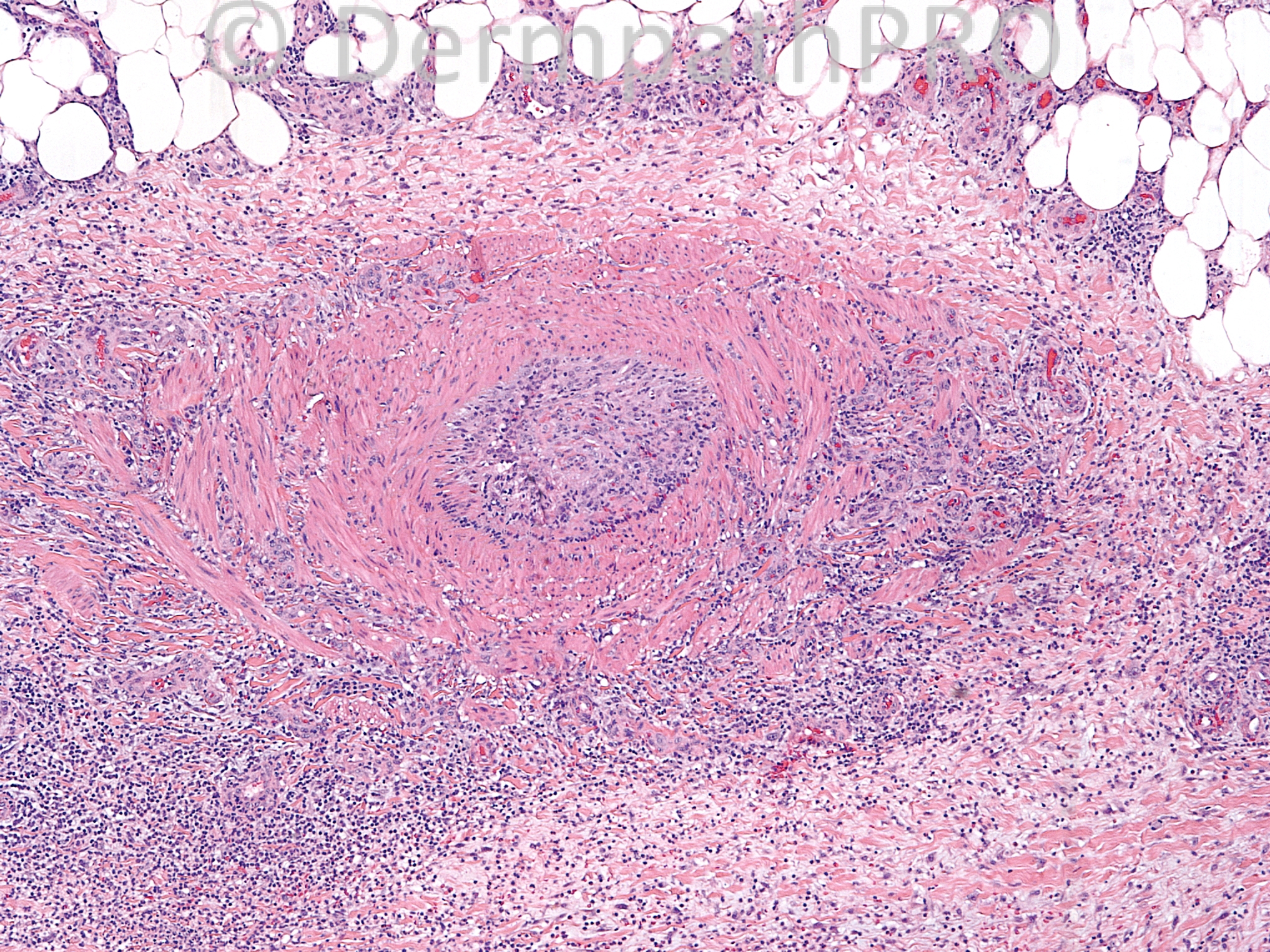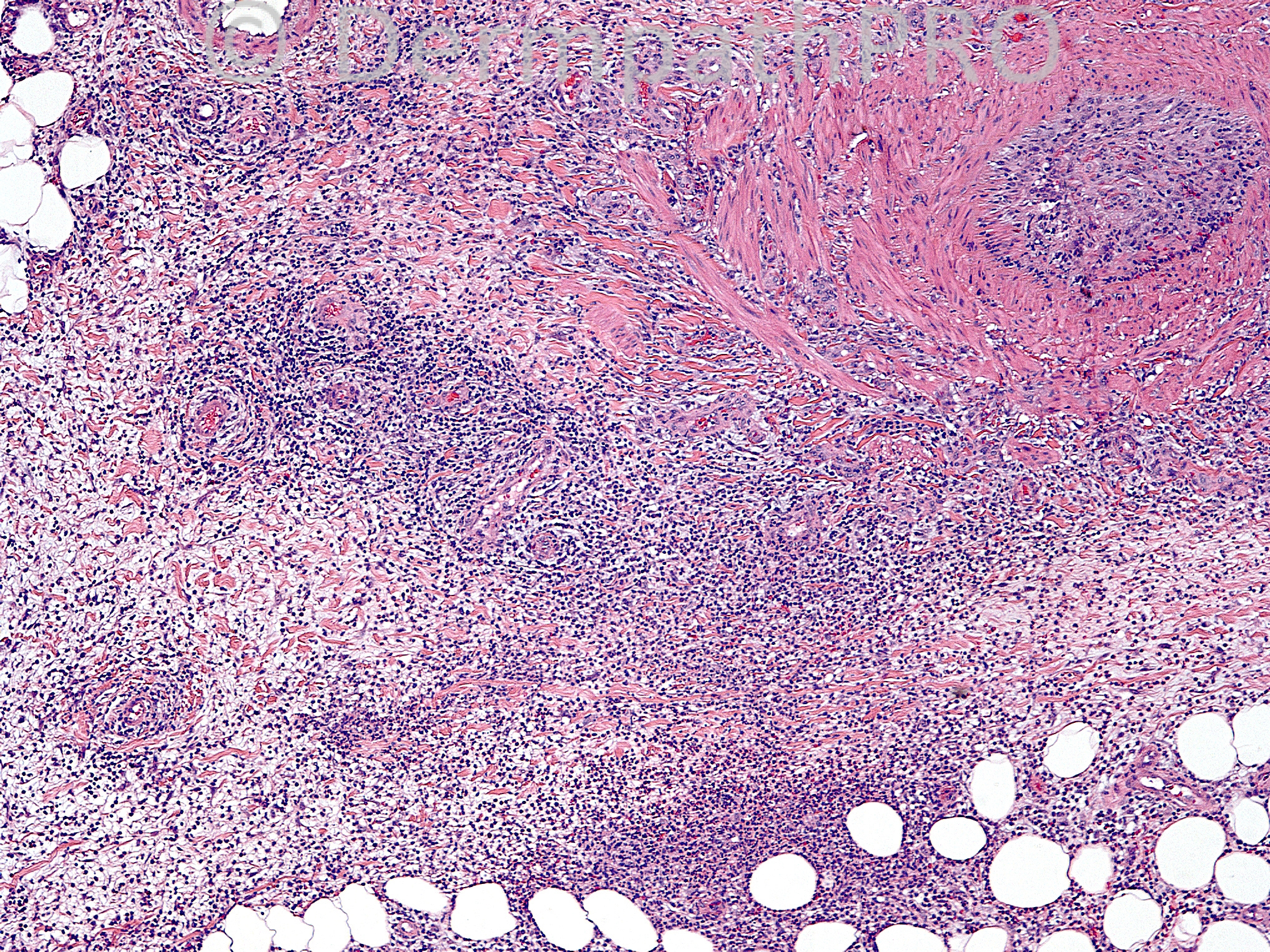Case Number : Case 1094 - 2nd September Posted By: Guest
Please read the clinical history and view the images by clicking on them before you proffer your diagnosis.
Submitted Date :
A 34-year-old male with violaceous plaques and nodules on bilateral lower extremities. Tender, come and go, patient otherwise in good health (no fever or chills, no weight loss, no fatigue). Duration approximately one year and intermittent. Biopsy of right thigh.
Case posted by Dr.Uma Sundram.
Case posted by Dr.Uma Sundram.






Join the conversation
You can post now and register later. If you have an account, sign in now to post with your account.